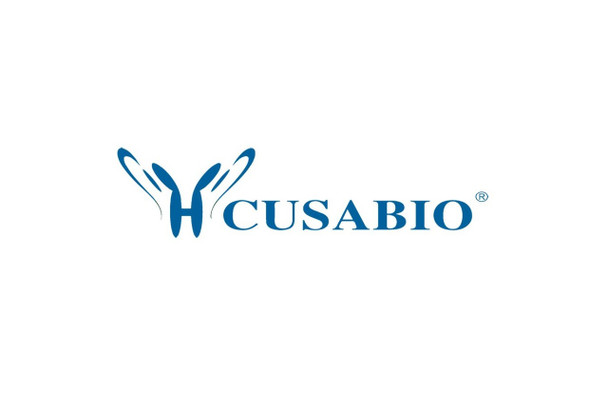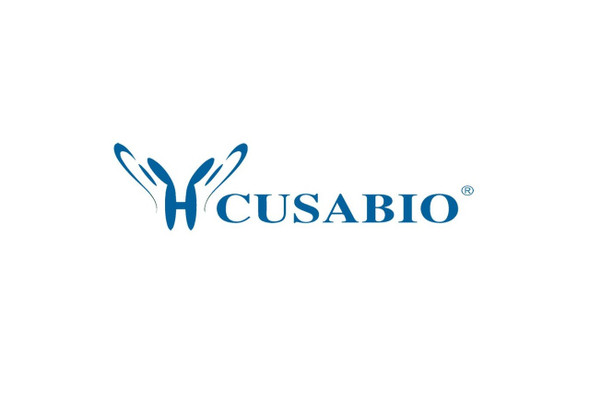Cusabio Human Recombinants
Recombinant Human Sodium-dependent phosphate transport protein 2B (SLC34A2), partial | CSB-YP021581HU
- SKU:
- CSB-YP021581HU
- Availability:
- 25 - 35 Working Days
Description
Recombinant Human Sodium-dependent phosphate transport protein 2B (SLC34A2), partial | CSB-YP021581HU | Cusabio
Alternative Name(s): Na(+)-dependent phosphate cotransporter 2BNaPi3bSodium/phosphate cotransporter 2B ;Na(+)/Pi cotransporter 2B ;NaPi-2bSolute carrier family 34 member 2
Gene Names: SLC34A2
Research Areas: Signal Transduction
Organism: Homo sapiens (Human)
AA Sequence: LLQSRCPRVLPKKLQNWNFLPLWMRSLKPWDAVVSKFTGCFQMRCCCCCRVCCRACCLLCDCPKCCRCSKCCEDLEEAQEGQDVPVKAPETFDNITISREAQGEVPASDSKTECTA
Source: Yeast
Tag Info: N-terminal 6xHis-tagged
Expression Region: 574-689aa
Sequence Info: Cytoplasmic Domain
MW: 15.1 kDa
Purity: Greater than 90% as determined by SDS-PAGE.
Relevance: May be involved in actively transporting phosphate into cells via Na+ cotransport. It may be the main phosphate transport protein in the intestinal brush border mbrane. May have a role in the synthesis of surfactant in lungs' alveoli.
Reference: Generation and annotation of the DNA sequences of human chromosomes 2 and 4.Hillier L.W., Graves T.A., Fulton R.S., Fulton L.A., Pepin K.H., Minx P., Wagner-McPherson C., Layman D., Wylie K., Sekhon M., Becker M.C., Fewell G.A., Delehaunty K.D., Miner T.L., Nash W.E., Kremitzki C., Oddy L., Du H. , Sun H., Bradshaw-Cordum H., Ali J., Carter J., Cordes M., Harris A., Isak A., van Brunt A., Nguyen C., Du F., Courtney L., Kalicki J., Ozersky P., Abbott S., Armstrong J., Belter E.A., Caruso L., Cedroni M., Cotton M., Davidson T., Desai A., Elliott G., Erb T., Fronick C., Gaige T., Haakenson W., Haglund K., Holmes A., Harkins R., Kim K., Kruchowski S.S., Strong C.M., Grewal N., Goyea E., Hou S., Levy A., Martinka S., Mead K., McLellan M.D., Meyer R., Randall-Maher J., Tomlinson C., Dauphin-Kohlberg S., Kozlowicz-Reilly A., Shah N., Swearengen-Shahid S., Snider J., Strong J.T., Thompson J., Yoakum M., Leonard S., Pearman C., Trani L., Radionenko M., Waligorski J.E., Wang C., Rock S.M., Tin-Wollam A.-M., Maupin R., Latreille P., Wendl M.C., Yang S.-P., Pohl C., Wallis J.W., Spieth J., Bieri T.A., Berkowicz N., Nelson J.O., Osborne J., Ding L., Meyer R., Sabo A., Shotland Y., Sinha P., Wohldmann P.E., Cook L.L., Hickenbotham M.T., Eldred J., Williams D., Jones T.A., She X., Ciccarelli F.D., Izaurralde E., Taylor J., Schmutz J., Myers R.M., Cox D.R., Huang X., McPherson J.D., Mardis E.R., Clifton S.W., Warren W.C., Chinwalla A.T., Eddy S.R., Marra M.A., Ovcharenko I., Furey T.S., Miller W., Eichler E.E., Bork P., Suyama M., Torrents D., Waterston R.H., Wilson R.K.Nature 434:724-731(2005)
Storage: The shelf life is related to many factors, storage state, buffer ingredients, storage temperature and the stability of the protein itself. Generally, the shelf life of liquid form is 6 months at -20?/-80?. The shelf life of lyophilized form is 12 months at -20?/-80?.
Notes: Repeated freezing and thawing is not recommended. Store working aliquots at 4? for up to one week.
Function: May be involved in actively transporting phosphate into cells via Na(+) cotransport. It may be the main phosphate transport protein in the intestinal brush border membrane. May have a role in the synthesis of surfactant in lungs' alveoli.
Involvement in disease: Pulmonary alveolar microlithiasis (PALM)
Subcellular Location: Membrane, Multi-pass membrane protein
Protein Families: SLC34A transporter family
Tissue Specificity: Highly expressed in lung. Also detected in pancreas, kidney, small intestine, ovary, testis, prostate and mammary gland. In lung, it is found in alveolar type II cells but not in bronchiolar epithelium.
Paythway:
Form: Liquid or Lyophilized powder
Buffer: If the delivery form is liquid, the default storage buffer is Tris/PBS-based buffer, 5%-50% glycerol. If the delivery form is lyophilized powder, the buffer before lyophilization is Tris/PBS-based buffer, 6% Trehalose, pH 8.0.
Reconstitution: We recommend that this vial be briefly centrifuged prior to opening to bring the contents to the bottom. Please reconstitute protein in deionized sterile water to a concentration of 0.1-1.0 mg/mL.We recommend to add 5-50% of glycerol (final concentration) and aliquot for long-term storage at -20?/-80?. Our default final concentration of glycerol is 50%. Customers could use it as reference.
Uniprot ID: O95436
HGNC Database Link: HGNC
UniGene Database Link: UniGene
KEGG Database Link: KEGG
STRING Database Link: STRING
OMIM Database Link: OMIM









